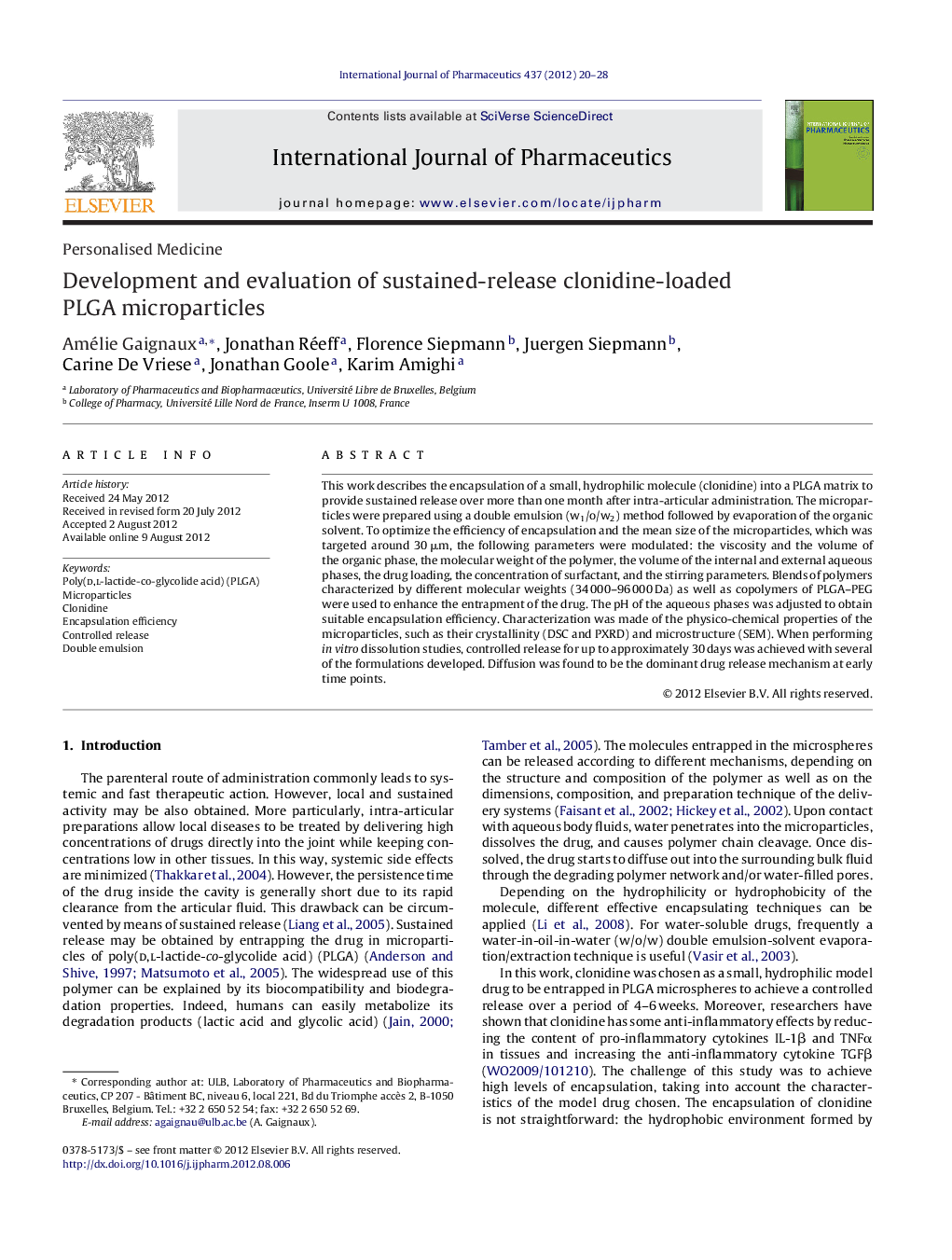| Article ID | Journal | Published Year | Pages | File Type |
|---|---|---|---|---|
| 2502746 | International Journal of Pharmaceutics | 2012 | 9 Pages |
This work describes the encapsulation of a small, hydrophilic molecule (clonidine) into a PLGA matrix to provide sustained release over more than one month after intra-articular administration. The microparticles were prepared using a double emulsion (w1/o/w2) method followed by evaporation of the organic solvent. To optimize the efficiency of encapsulation and the mean size of the microparticles, which was targeted around 30 μm, the following parameters were modulated: the viscosity and the volume of the organic phase, the molecular weight of the polymer, the volume of the internal and external aqueous phases, the drug loading, the concentration of surfactant, and the stirring parameters. Blends of polymers characterized by different molecular weights (34 000–96 000 Da) as well as copolymers of PLGA–PEG were used to enhance the entrapment of the drug. The pH of the aqueous phases was adjusted to obtain suitable encapsulation efficiency. Characterization was made of the physico-chemical properties of the microparticles, such as their crystallinity (DSC and PXRD) and microstructure (SEM). When performing in vitro dissolution studies, controlled release for up to approximately 30 days was achieved with several of the formulations developed. Diffusion was found to be the dominant drug release mechanism at early time points.
Graphical abstractFigure optionsDownload full-size imageDownload high-quality image (127 K)Download as PowerPoint slide
